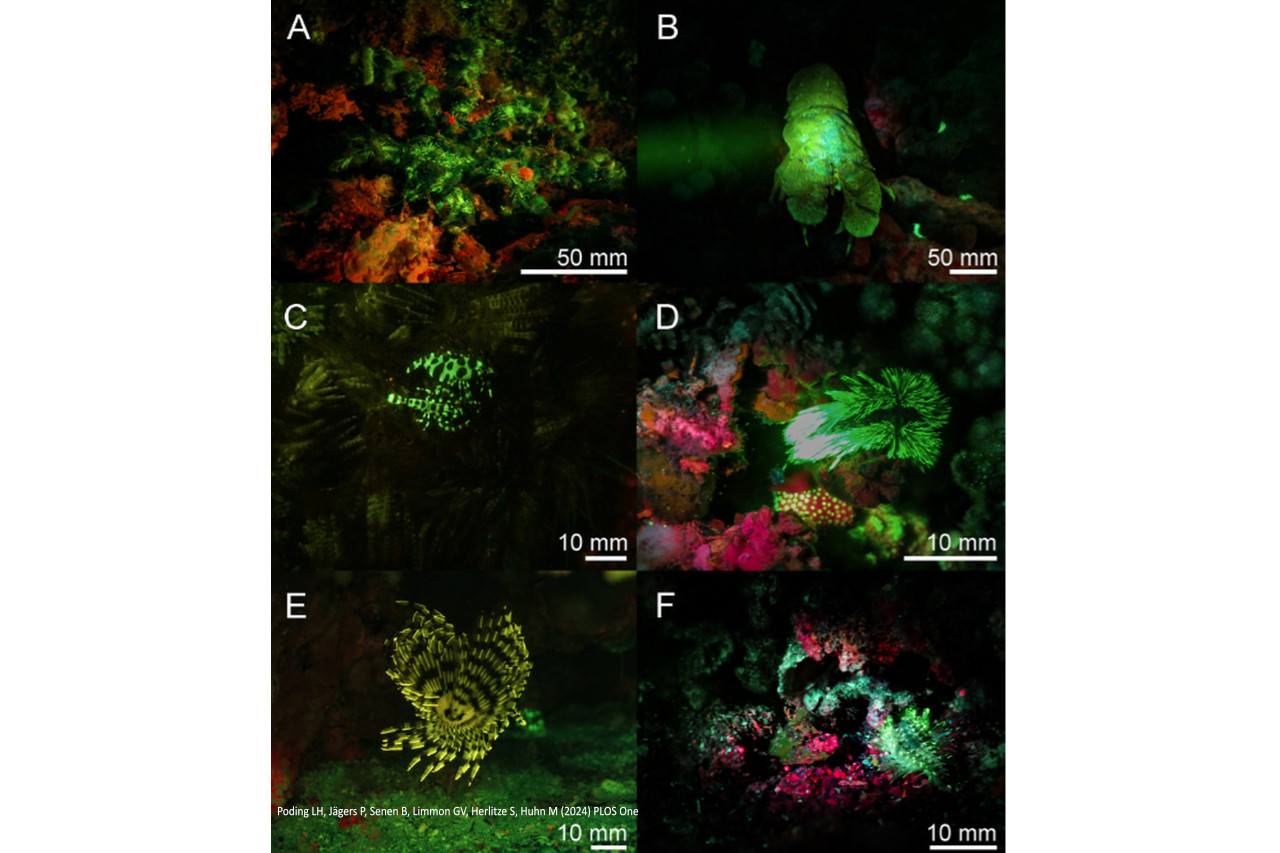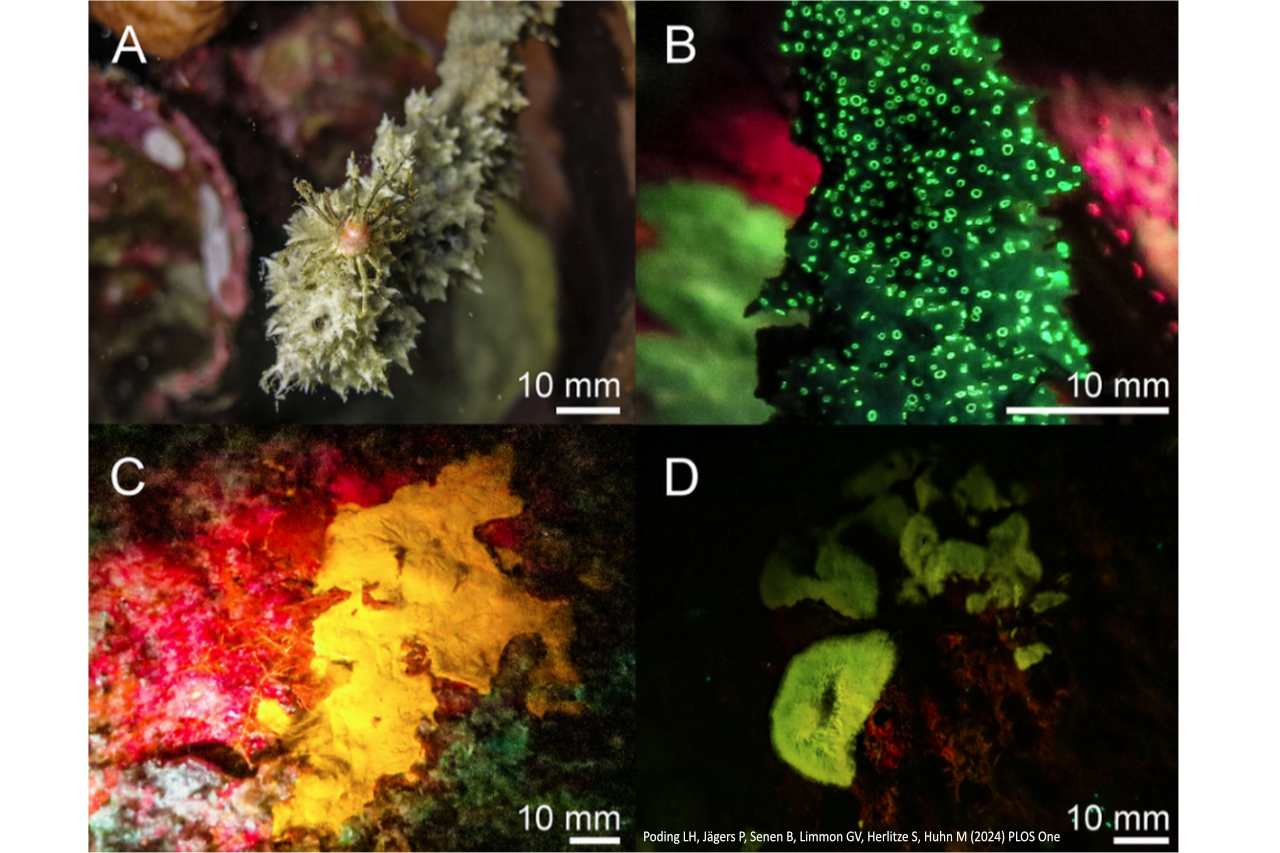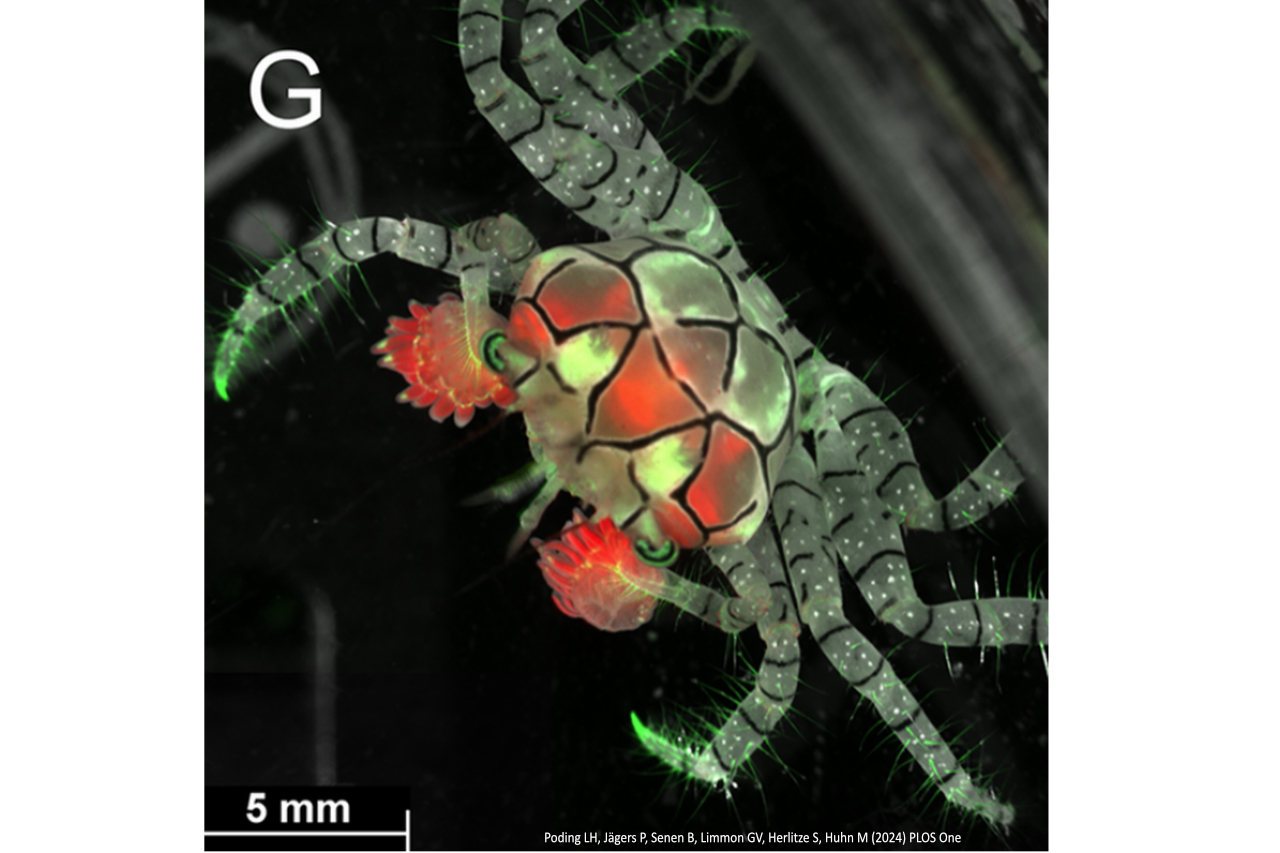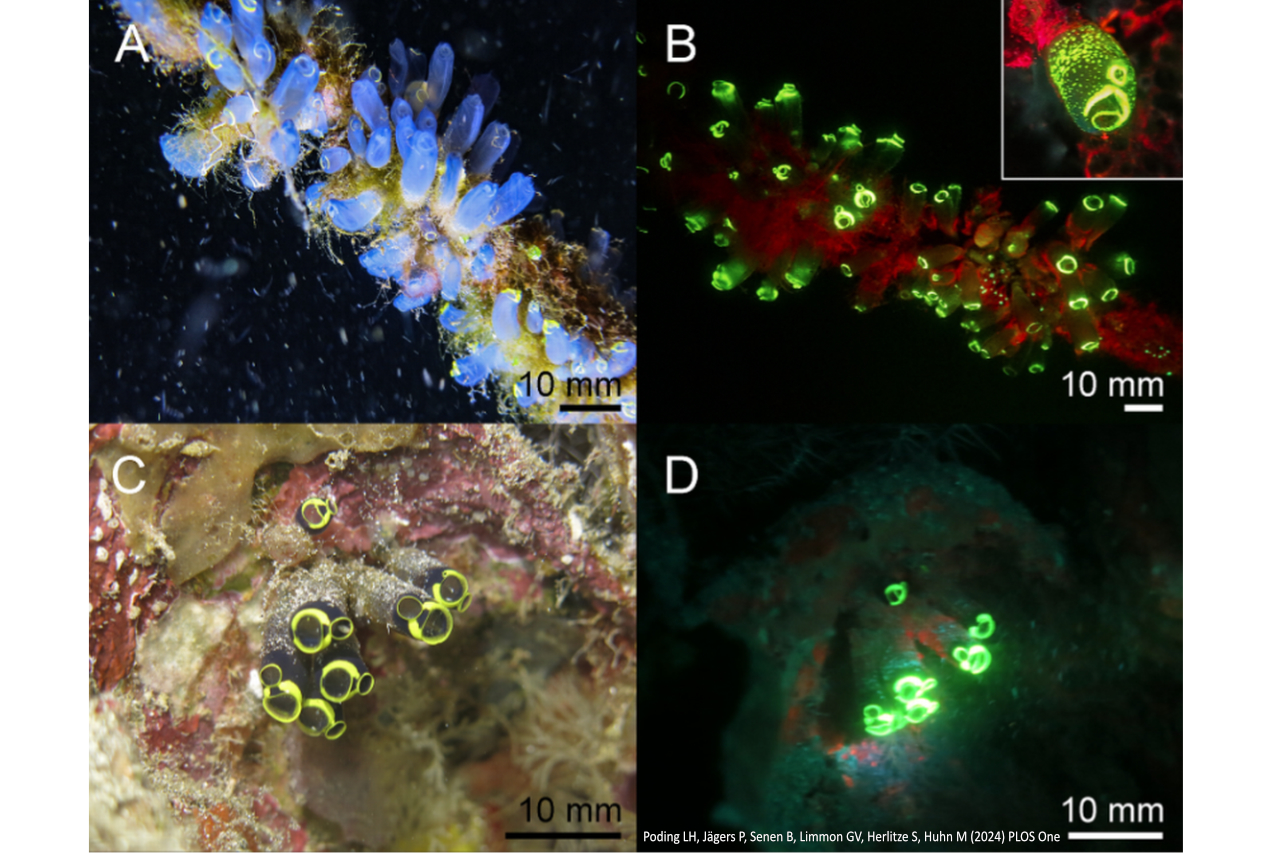Dozens of sea creatures seen glowing for the first time.


During night dives in the Banda Sea and the Red Sea, divers observed a phenomenon called fluorescence, where marine creatures glow under special-colored lights. Unlike bioluminescence, which is light produced by the animals themselves, fluorescence occurs when certain molecules absorb specific wavelengths of light and re-emit it at a longer wavelength, creating a neon effect. This study, published in PLOS One, identified fluorescence in 27 species for the first time, including sponges, mollusks, tunicates, and fish, expanding our understanding of how many marine organisms exhibit this glowing trait.

Researchers discovered that various marine sponges exhibit fluorescence in different colors when photographed, with some glowing green and others turning yellow or orange. The study also identified specific species with unique fluorescent traits. For instance, the octopus Abdopus aculeatus displayed orange, fluorescent markings on its body, particularly bright patches below its yellow eyes and on its arms. A giant clam appeared bright red, resembling puckered lips on the seafloor. The mosaic boxer crab, Lybia tessellata, looked like a stained-glass window with neon green hairs, yellow patches, and bright red accents. Fluorescence varies among animals due to different biological pathways, and its evolutionary function remains unclear. For example, a marine snail that eats algae excretes it, leaving a weak fluorescence that deters fish from eating the snail.

Researchers have found that a deep-sea scarlet frogfish fluoresces in a manner that blends with its surroundings, suggesting it uses fluorescence for camouflage. This study indicates that fluorescence is a widespread phenomenon and not just limited to cnidarians like jellyfish, anemones, and corals. By systematically searching marine biodiversity hotspots with blue or UV lights, researchers believe they will discover more fluorescent species and molecules, which will aid in understanding the various roles fluorescence plays in marine ecosystems. The study's observations were made in the Banda Sea, located in Indonesia, and the Red Sea, situated between Egypt and Saudi Arabia. Go to Irene Wright’s article in the Miami Herald to learn more https://www.miamiherald.com/news/nation-world/world/article289256620.html